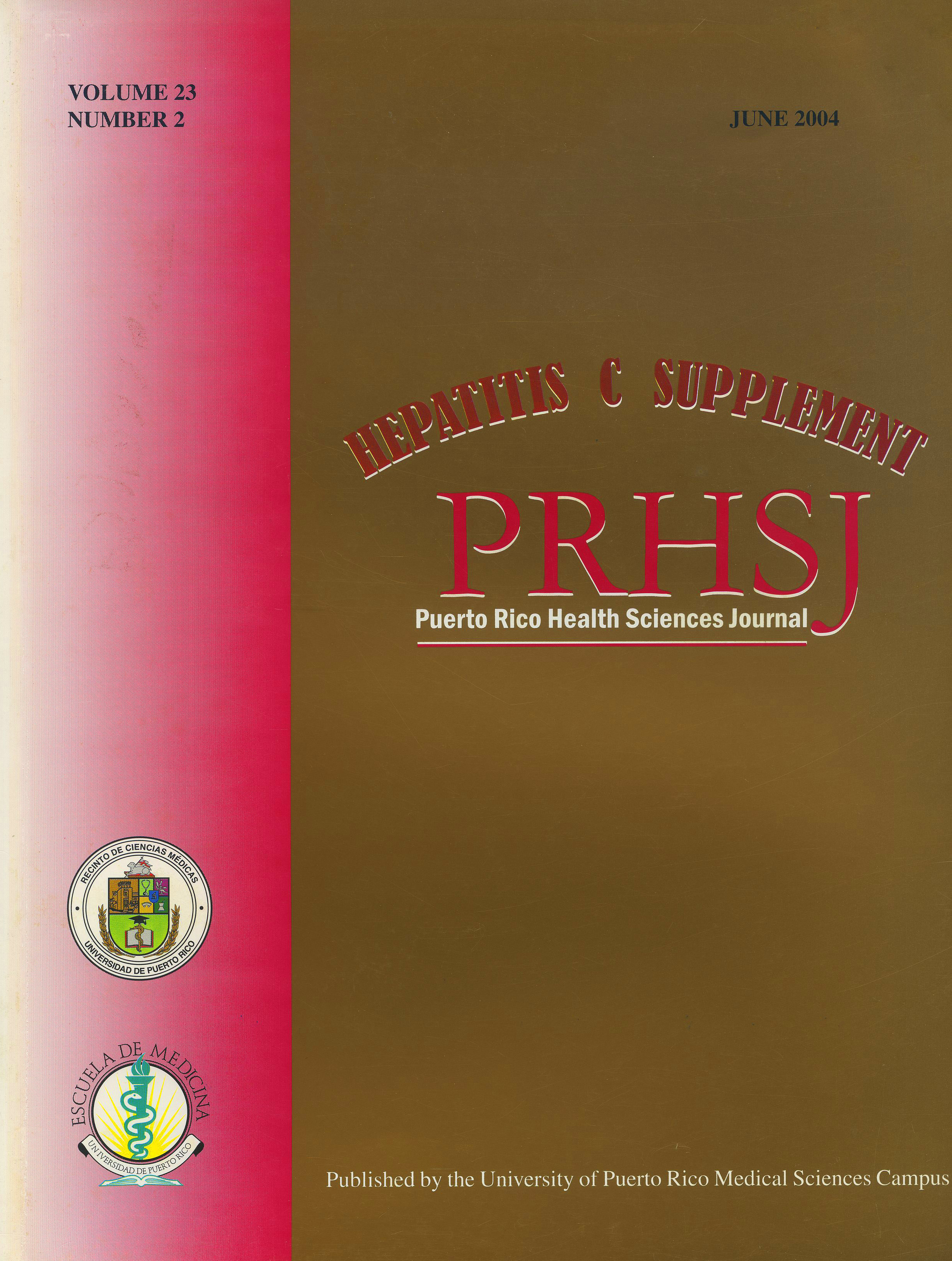Abstract
Background. Hepatic steatosis has been described in 31-72% of chronic hepatitis C virus (HCV) liver biopsies. Steatosis has been related to disease progression and suggested as a predictor of treatment response in chronic HCV. This study aims to evaluate the presence and degree of steatosis in liver histology of patients with chronic HCV prior to combination therapy with interferon (INF) and ribavirin (RBV), and how it influences treatment response. Methods. The medical charts of patients with chronic HCV who received treatment at the San Juan Veterans Affairs (VA) Medical Center from 1998 to 2002 were reviewed. Selected patients completed therapy, had a pre-treatment liver biopsy, genotype determination, and pre and post treatment HCV-RNA levels. Patient’s age, sex and body mass index (BMI) were determined. Pre-treatment liver biopsy slides were reviewed and graded for steatosis by a hepatopathologist blinded to the treatment outcome. Steatosis was graded by the presence of fat in total biopsy area as: mild (<33%), moderate (33-66%), severe (>66%) or absent. Treatment response was defined as virological clearance measured by HCV RNA at the end of treatment and 24 weeks after completion of treatment. The presence of steatosis was compared to BMI, HCV genotype and treatment response. Results. 46 patients met the inclusion criteria. All patients were male of Hispanic origin. Mean age: 52.7 years (range: 40-68). Mean BMI: 27.5 kg/m2 (range: 21.1-35.9). HCV genotype 1 was present in 67% of patients. 82.6% (38/46) of the patients had hepatic steatosis: 29 (63%) mild, 7 (15%) moderate and 2(4%) severe. 16.6% (8/46) of the biopsies did not show steatosis. Overall, the response rate for those with steatosis was 31.6% (12/38): 10/29 (34.5%) mild, 1/7 (14.3%) moderate and 1/2 (50%) of severe. 75% (6/8) of those without steatosis responded to treatment. This difference (31.6% vs.75%) was statistically significant (p=.042). The mean BMI of both groups was similar (27.7 kg/m2 for those with steatosis and 26.6 kg/m2 for those without steatosis). This difference was not statistically significant (p=.308). Conclusions. The results of our study show a high prevalence of steatosis in the liver histology of patients with chronic HCV. The presence and degree of steatosis in our HCV patients appears to be unrelated to either genotype or BMI. Furthermore, the response to therapy is negatively influenced by the presence of steatosis regardless of genotype. Hepatic steatosis, mild, moderate or severe, appears to be an independent predictor of poor response to therapy.
Authors who publish with this journal agree to the following terms:
a. Authors retain copyright and grant the journal right of first publication with the work simultaneously licensed under a Creative Commons Attribution License that allows others to share the work with an acknowledgement of the work's authorship and initial publication in this journal.
b. Authors are able to enter into separate, additional contractual arrangements for the non-exclusive distribution of the journal's published version of the work (e.g., post it to an institutional repository or publish it in a book), with an acknowledgement of its initial publication in this journal.
c. Authors are permitted and encouraged to post their work online (e.g., in institutional repositories or on their website) prior to and during the submission process, as it can lead to productive exchanges, as well as earlier and greater citation of published work (See The Effect of Open Access).
